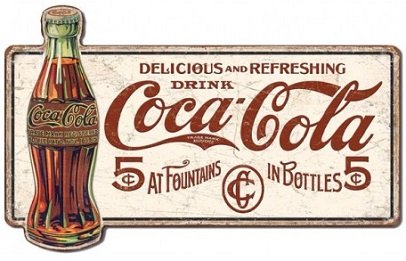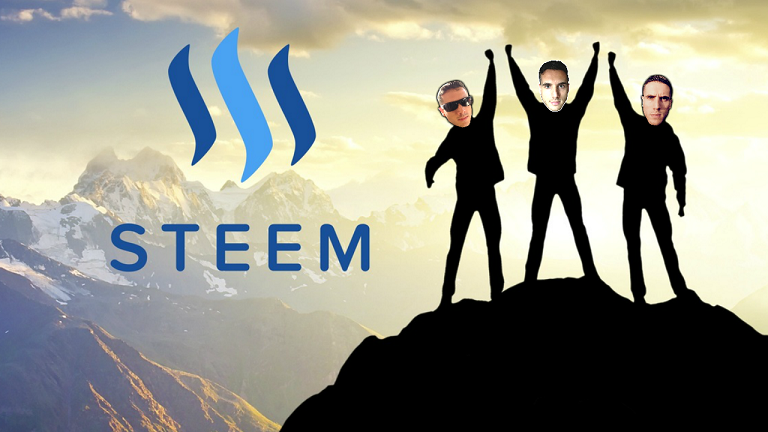Fun fact: A glass bottle of Coca-Cola cost just five cents in 1960. That means if you bought only $500 worth of Coke-Cola in 1960 (somehow preserved them until now) you could sell them now for $20,000 (Coke's go for $2 of the same size today.).

Putt-Putt Golf used to cost around 1-2 bucks to play in the 1980's. Putt-Putt golf last year ago cost around $15 per person. In just forty years, the price to play golf has risen 15x - the price to play didn't actually get more expensive, the fiat held just became less valuable.

Minimum wage (hourly pay for the value provided) has gone from .50 cents to around $10 (depending on where one lives) from 1960's until now. Do workers offer 20x the value in one hour sixty years ago compared to today? No. Arguably workers provide 20x less value then they did compare to today with the help of computers & machinery.
So what does all this prove? - Value doesn't hyperinflate, fiat does.
People in Kenya for the most part no longer use the government issued fiat. Instead, their primary currency used today is called the "M-Pesa" (prepaid cell phone minutes). Eighty-percent of all transactions in the country is done via mobile phone.
As we can see, M-Pesa could have run an ICO! ;) - All jokes aside: Money = Value; we lost that train of thought in the first world countries. In Kenya, the government currency which has little value is treated as such.
Value comes in all forms, whether it be cell phone minutes, convenience, soda or an hours labor. Coke-Cola certainly isn't needed to survive; it actually is a determinant of one's health. Coke's value derives from people who like the taste. People like using a phone instead of writing a letter, people pay for that convenience.
Only things needed in this world are food, water, and a warm place when it is cold; the rest is a luxury illusionary utility benefit which we place a specific value. Just like with Crypto Kitties selling for thousands of dollars, the value is in the eye of the behodler.
Moreover, the way we protect and transfer value across the planet is rapidly evolving. Africa jumped straight from wired telecommunications into wireless. Now the whole country is run on wireless. Predicted along time ago, "E-Cash" is now here. Next will be "E-Value" - that which has value and is secure, fungible and stored on the blockchain.
Comparing the dot.com era to now, the main difference is infrastructure will not need to be built; the existing base will be shared. We will share everything from computing power, space to bandwidth. Anything and everything we could ever need to make unique and secure value are at our fingertips; in the form of digital tokens.
Just like people in Africa did not experience DSL and landlines by leapfrogging straight into wireless, the rest of the world will leapfrog straight to the blockchain. The adoption of blockchain technology will happen much quicker than people currently anticipate. Software evolves much faster than hardware; blockchain will rapidly reach every corner of the globe. Having a mobile phone equates to having a bank account in one's pocket. Whalecum to 2018! By 2022 your 13-year-old will be making crypto loans via smart contracts to your uncle.
Putt-Putt requires people to first buy tokens before playing the games. No one has ever once said: "No! I do not want to buy these tokens! What are they backed by? This is a Ponzi!"
Fast-forward into the digital age where things like "Gold" in WoW, which sold outside in an OTC market for fiat. Things like "Vbucks" in Fornite are in high demand. Players do not refuse to buy Vbucks while demanding the skins to be priced in fiat only.
Vbucks have value because Fornite is fun which makes Vbucks desirable for players to buy in-game skins. Quality digital currency is backed by value. Now put Vbucks & the Fornite digital skins on the blockchain, cap the coins, BAM! A top-five token is born.
"But, why is a token needed?" - Using NLC2 (No Limit Coin), an old favorite fantasy sports and poker crypto of mine as an example. The thing about not creating your own crypto and say do what Fan Duel (NLC2 fiat competitor) did by making Dash their official cryptocurrency is the fact that now they rely on Dash. No one knows if Dash will be around in five years. Look at Verge & Pornhub, Pornhub got fucked because of a Verge hack. Also for most platforms, one currency is needed. For example, fantasy sports can accept all different forms of payment but the actual games need to be priced in one currency. It is not efficient to have Ethereum only leagues and Litecoin only leagues, etc. In order to have the biggest best tournaments, pooling everyone's value into one form of buyin is the best option.
Furthermore, using things like Bitcoin was not an option for NLC because of the unpredictable fees. Let's not forget the stigma that surrounds popular cryptocurrencies... Use Bitcoin, and you murder babies! Use Bitcoin Cash, and you are a sworn enemy of Bitcoin! Use Litecoin but same boat as Dash. It is very advantageous for a project to merely tokenize its value and molding it into what is most beneficial for the project. Vbucks becomes worthless the moment no one plays Fornite anymore; not because some protocol gets hacked or some stigma attached to a coin that is outside of Fortnites control.
To utilize the maximum potential of smart contracts you need to build your token that is tuned for your projects needs. The reason is it is desirable to have a dedicated utility token; control over the branding and specific use case is powerful. Brenden Eich, the inventor of JavaScript & creator of the cryptocurrency called "BAT" (Basic Attention Token), said the main reason he created his own token instead of using Bitcoin or Ethereum was that he wanted to find out exactly how much user attention cost.
BAT is specifically designed to measure users attention. Focusing on a specific niche is useful because price discovery is important for cryptocurrencies. Having an untainted result provides the most accurate data for price discovery. Using another currency aside from BAT would result in inaccurate data. The fluctuations in price would not be attributed to attention, but rather to the whims of whichever currency used.
Another perk BAT experienced was the ability to "print value" in the beginning. Brave was able to pass out over 150 million dollars worth of BAT to give a significant boost to the ecosystem. As Brendan said: "No one was lined up and eager to give me 150 million dollars." With the right approach, one can actually use the creation of value to a powerful advantage without causing chaos to the token economy itself. When Venezuela inflates their currency it devalues it when BAT inflates the circulating supply it brings more value to the ecosystem via mass adoption.
"Why not use fiat?" - First off, the spirit of decentralization is vital. Also, using government-issued currencies means relying on centralized third-party payment processors which is both costly and noncensorship resistant. Crossing borders is also a massive headache and depending on the fiat currency used, exposed to the risk of inflation and other government malarky.
"How does a Utility Token increase in value?" - Just like in the examples with the can of Coke-Cola and Putt-Putt Golf, the value stays fixed while the currency fluctuates around the token, not the other way around. So, let's say in USD it cost 5$ a month to use the Civic Key Identity Protection service (pulled this number out of the ether.). - Now, the token supply is limited but the potential customer base is not. As the number of users grows in the ecosystem the cost of the service stays pegged in USD while the cost of the Civic token is driven by supply & demand. As people are buying more tokens at the market price, the cost of the Civic Token goes up while the USD price of the service stays the same. This month it may cost 10 Civic Tokens for a monthly payment, next month it may only cost 5 Civic Tokens for the same service. Customers don't care how much a Civic Token cost if they simply just want the identity service, so they buy the token at whatever the current market rate.
The vision is in the future people won't know they are even using a token. Like Mike Novogratz said with "DUber" (decentralized Uber): "Customers will look down on their phone and it will say two prices, one will say: save 20% now - they will click that it will automatically convert their fiat to DUber Tokens." It will be frictionless and people will not even realize they are using crypto at all. Then drivers would be incentivized to hodl DUber tokens, become speculators in the business they work in. Even customers who are investor savvy will start hodling DUber Tokens in speculation the ecosystem will grow.
With a custom Utility Token designed specifically for a project, having custom control over the number of tokens in existence, inflation, built in smart contracts and governance structure is the future. For example, Bitcoin is scarce because only 21 million can ever be created, thus when demand is high the price increases. If there was 21 trillion bitcoin, the price would not increase as much because the supply is so overwhelming.
Another situation of customizing a tokens economy we will look at Steem as an example: SteemPower needs to be locked up for a period is an excellent example of a decreasing supply vs. demand perk. With great minds comes great token economies which are vital for the longevity of the project. Let's not forget, a powerful driving force behind Bitcoins movement is the fact it is a deflationary currency and store of value, store of values need to go up in price or remain at least stable in the long run for this experiment to be considered successful.
"What about the token velocity issue?" - To Quota Vitalk Buterin (https://bit.ly/2gXcYhh): > "The market cap of an appcoin depends crucially on the holding time H [which is inversely related to velocity]. If someone creates a very efficient exchange, which allows users to purchase an appcoin in real time and then immediately use it in the application, then allowing sellers to immediately cash out, then the market cap would drop precipitously… Protocol tokens using this model may well be sustained for some time due to irrationality and temporary equilibria where the implicit cost of holding them is zero, but it is the kind of model which always has an unavoidable risk of collapsing at any time."
To avoid the velocity problem, tokens must have a way of being locked up. People need to purchase Utility Tokens because the utility is valuable to them. A token simply can't be like flowing water. If the token is treated like a hot potato, and no one really wants it, then the velocity problem will win out in the end. But in the case of a token like EOS, where the token is actually used similar to virtual real estate and is locked up and built on top of. This is a great way to stop velocity in its tracks. Another example is Steemit, where people power up their Steem and lock it away. With natural dynamics and artificially created incentives projects can find ways to greatly reduce velocity.
Other Utility Token Benefits:
Tokenizing the value around a company or platform and decentralizing the control has other tremendous benefits as well. Let's use Steem again as an example. Look at the beauty of tokenization on Steemit. We all come together as a community, some of us do not even blog or produce content but still find a way of helping. Death by a thousand cuts is how Steemit will bring down the social media conglomerates. The community on Steem is like one big team, and we act like motivated Amway Salespeople outside of the Steemit blockchain. Compared to the legacy system and traditional centralized business models, decentralized blockchains like Steem offer many benefits.
The traditional centralized business models comprise people into one of four main categories:
1. Owners/CEO's.
What Owners Want: Most profit possible.
How To Achieve: Pay employees the least amount possible and find the cheapest way to produce the service.
Results: Unmotivated underpaid employees plus a low-quality service.
2. Employees.
What Employees Want: To maximize pay & minimize effort.
Results: This lowers the owner's profit by overpaying workers who are under delivering, which in turn reduces employee pay and results in low-quality work. Lousy work leads to less profit for the owner and the circle of hell continues.
3. Customers.
What Customers Want: The biggest bang for their buck; the best quality at the lowest price.
Results: A race to the bottom. Wanting to pay the least for the best quality puts a strain on owners, which puts a strain on employees that results in a low-quality service.
4. Sharehodlers.
What Sharehodlers Want: Maximize profit, even at the expense of the owner.
Results: Downward pressure on the entire company.
All four of these people conflict with each other. The centralized owner who takes all of the profits and gives some crumbs to the workers is the central strain on this model. CEO's are paid 300-1 compared to their employees (on avg.). An employee can work their whole life, provide more value for the company then the CEO does, then the CEO can decide to sell the company and get 99% of the profit from the sale just to leave the employees jobless with a small severance package. All of this naturally places disdain for the CEO.
The solution is to take these four people and combine them into one person. There is a name for this called The "DAO" (Decentralized Autonomous Organization).
With The DAO, everyone is the owner, customer, employee, & sharehodler all at the same time; motivational incentives are in perfect alignment.
As a token hodler, one would use the token as a customer. Once using the product the person would act as an employee & owner at the same time; this provides a better service which increases the value of the organization as a whole which serves the sharehodler side. - All a conveyor belt to success.
Example: Think of it as a restaurant. People order food; they leave trash behind, wasteful with the resources (leaving the water running in the bathroom) not their water bill so they do not care. The waiter/waitress are just friendly enough to get a tip and clean up just enough to not get yelled at by the boss. The boss is pissed at the lack of hustle from the employees and wants to pay them less, which unmotivated the workers. Because the hustle is off the money is not coming in, so the owners skimp on the quality of the food. Lower quality food means fewer customers which means less profit which means angry sharehodlers. All of this leads to a spiral of death (Wonder why 90% of new businesses fail using this model.).
We could see the potential if the employee was also the owner, customer, and sharehodler all in one because as a customer one would want tasty food. The place would be spotless because, again, as a customer eating there that would be naturally optimal. The employee/owner side would also pick up others people trash because now the person has incentive to want other people also to like the place. The owner side would want to get more profits so would look to further expand the value of the business in any way possible. The All-In-One: Costumer, Owner, Employee & Sharehodler; this leads to the spiral of wealth.

Combining The DAO with a well thought out token economy will create the next Amazon's & YouTube's of the world, only decentralized versions. When comparing a DAO with the legacy system; the primary rights of a sharehodler in the legacy system:
- Voting Power On Major Issues.
- Ownership In a Portion of The Company.
- The Right to Transfer Ownership.
- An Entitlement to Dividends.
- Opportunity to Inspect Corporate Books & Records.
- The Right to Sue For Wrongful Acts.
Now, if we take a look at each one from above, let's see how it compares to Steem:
Voting Power on Major Issues. - Steem Hodlers can vote on witnesses, which run the network.
Ownership in a Portion of The Company. - Steem is ownership over the influence of the community. Unlike a stock, Steem has a real use-case regarding social media exposure.
The Right to Transfer Ownership. - Steem/SBD can be transferred without permission to anyone, anywhere, anytime instantly & for free.
An Entitlement to Dividends. - Steemians are entitled to allocate the flow of inflation of Steem each year. The more SteemPower one has, the higher percentage of influence that person has on the platform.
Opportunity to Inspect Corporate Books and Records. - Open source blockchains can be checked 24/7 without the approval of anyone.
The Right to Sue for Wrongful Acts. - The community can take action and downvote harmful content. If Ned were to walk away, just like Dan did, the Steem blockchain would still live.
Securities & certain utility tokens have a lot in common.
- Securities are controlled by a centralized organization that is reinforced by a government.
- Utility Tokens apart of a DAO are controlled by a Decentralized Organization that is reinforced by the community.
To wrap this all up. Will Crypto Utility Tokens Survive?
Yes.
-Why?
- Borderless Fundraising.
- Borderless Instant Transfers.
- Instantly Liquidity.
- VC's (Vulture Capitalist) Funding Not Needed.
- Offer as Much Control or More Than Securities.
- Anyone Can Participate.
- Security & Censorship Resistance.
- Token Economics.
- Open Source. (Think Internet vs. Intranet)

Utility tokens are the future of raising capital as ICOs become more sophisticated.
The DAO's are the future of how companies will run.
My first post on busy.org - I like the ease of use and the UI so far. :)
